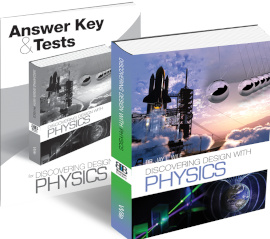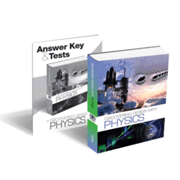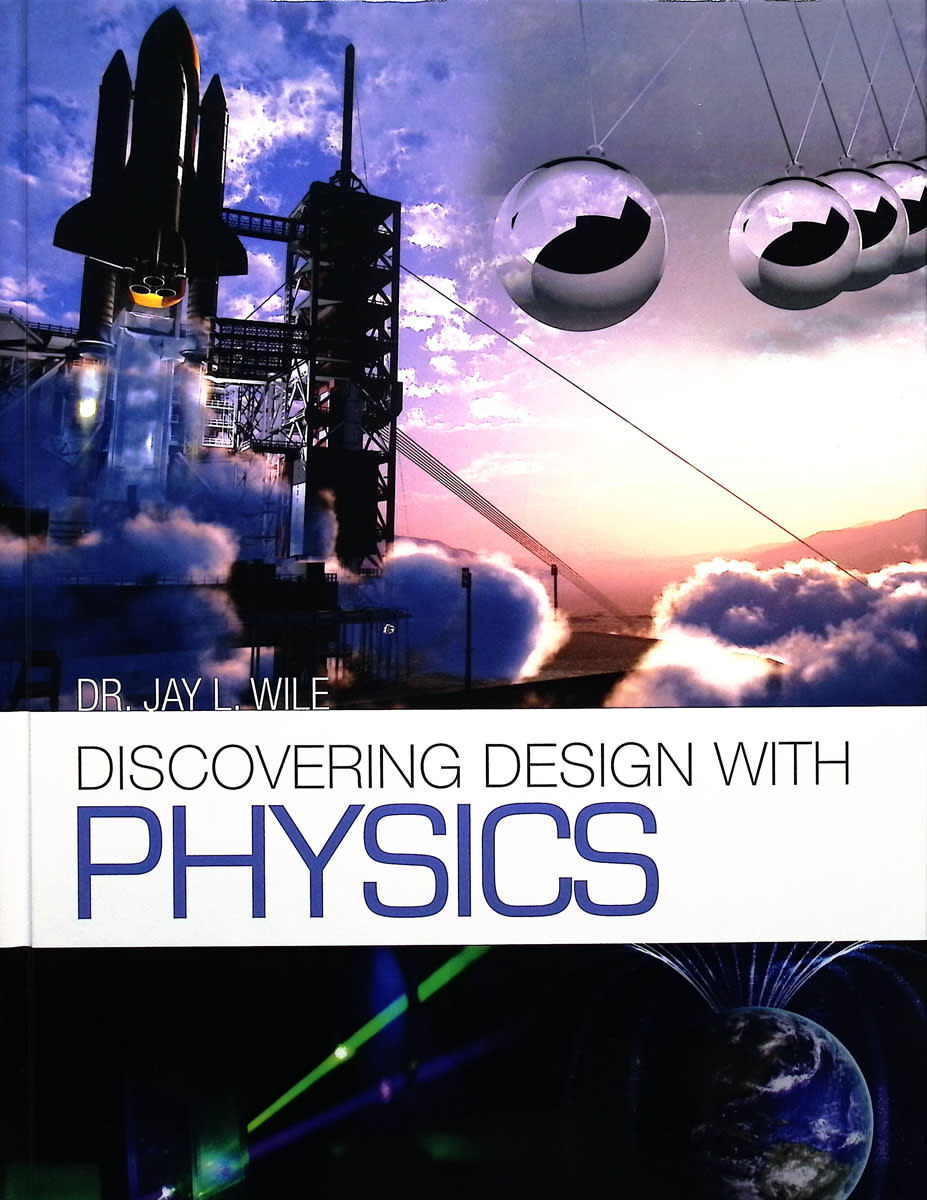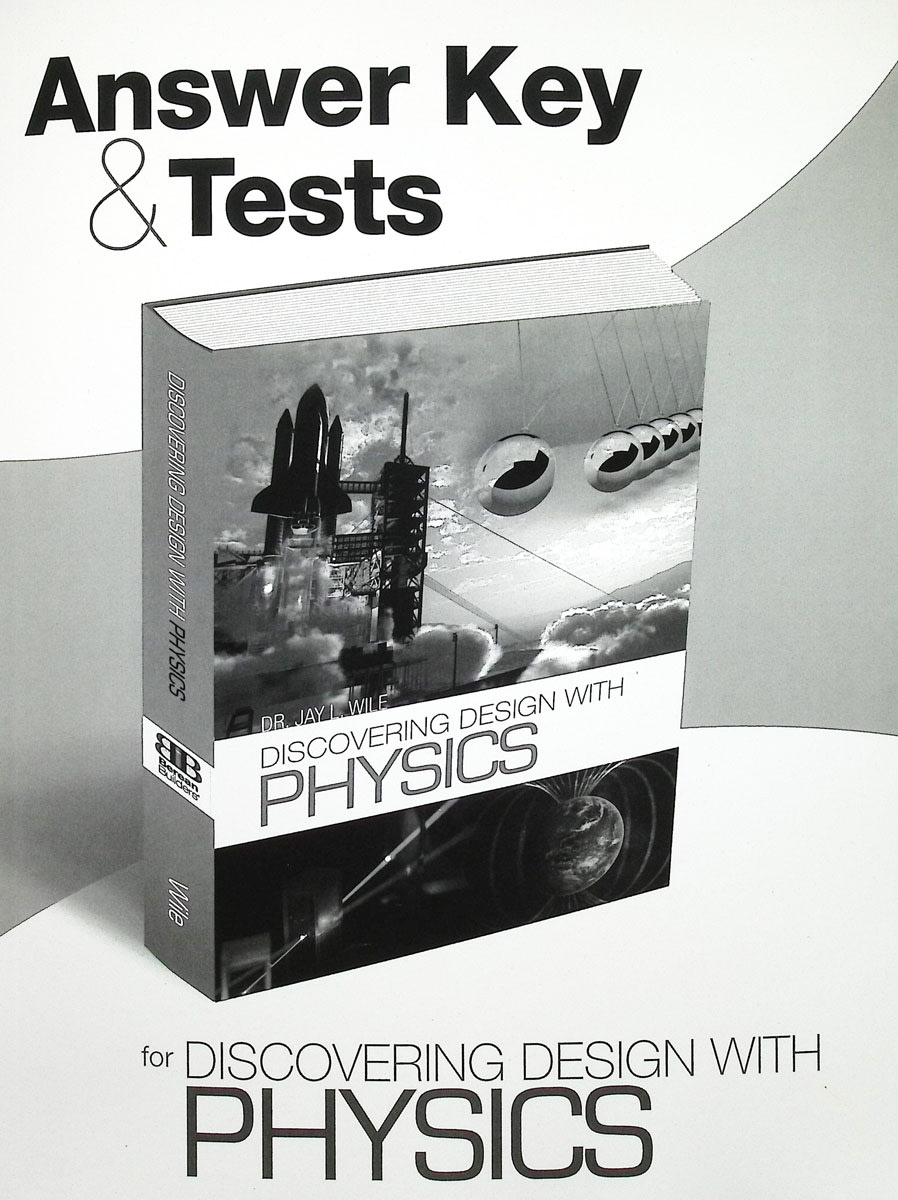Discovering Design with Physics is similar in design to Dr. Jay Wile’s other high school science courses. It’s a college-prep course with lab work, written directly to students in eleventh or twelfth grade so they can work independently.
The course covers essential topics for the high school level. It covers more than Khan Academy’s online course and Novare’s Introductory Physics (which is intended for use as early as ninth grade), but less than BJU Press’s Physics, 3rd edition, and McGraw Hill’s Physics, 5th edition. Both BJU Press and McGraw Hill add coverage of nuclear physics and quantum physics at the end of each course.
This is a math-based course that relies on students’ familiarity with algebra and basic trigonometric functions. Students are expected to use a scientific calculator, the use of which Dr. Wile assumes students will learn on their own.
There are a few mentions of religious beliefs and motivations of famous scientists, but religious content is very minimal.
The course consists of a textbook and an Answer Key & Tests book, and there’s a Discovering Design with Physics website with extra free resources.
The course is presented in 16 chapters and should take about 36 weeks to complete. A suggested schedule of daily assignments is available at the back of the textbook.
Dr. Jay Wile writes in a relaxed, conversational style that makes this challenging subject much more accessible than you might expect. He often poses a question and answers it, just as a teacher might do in a classroom. In addition, he explains concepts thoroughly and uses lots of examples and practical applications. If students get stuck, they can register (for free) and email questions to Dr. Wile.
Within each chapter, colored boxes make it easy to spot the different types of material. Pink boxes have statements and equations that must be memorized, such as one on page 11: “relative velocity = velocity of moving object – velocity of reference object.” Orange boxes contain example problems where Dr. Wile works out physics problems using math. Purple “Comprehension Check” boxes are scattered throughout each chapter, and experiments are in green boxes. Students must read, memorize, or work through the material in each box when they come to it.
A four-page list of “Constants and Mathematical Formulas” at the back of the book should be a helpful reference tool.
Complete solutions for Comprehension Check questions are provided near the end of each chapter to give students immediate feedback.
Open-book chapter reviews are intended for students as a self-check before taking the chapter test. Chapter reviews are in the textbook while tests and answer keys to both reviews and tests are in the Answer Key & Tests book.
Website extras
Many valuable resources are available on the dedicated website pages for this course. Several videos for each chapter explain concepts, demonstrate scientific principles, and help with the math. Printable pages with the Comprehension Check questions and review questions have space to write answers. While students can simply answer the questions from the book, these pages should help students keep their work organized and easy to review, while also making it easy for parents or teachers to see questions and answers together. Extra practice problems are available, and the suggested schedule is also available as a printable PDF.
Labs
There are one or more experiments per chapter, and they tie directly to the lesson content. Students will need many resources for the experiments, but most of them are household items or things easily obtained. Lists of required materials for each chapter are at the back of the textbook. Students will need to create a separate lab notebook, and sample pages on the course website show how students might write up their labs.
You might consider purchasing this course through Sonlight because it includes a lab kit. (If you decide to purchase from Sonlight, please consider entering my Rewards ID CD20086130 when you register an account on their site to start earning credits and referral rewards, and I'll get referral credit.)
Summary
Discovering Design with Physics is a challenging course, but for those who have the necessary math skills, it should be easy to use.












